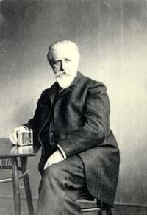
First Focal Plane shutter Camera

Ottomar Anschuetz
Photographer and inventor
who not only provided Goerz with the economic use of his
patent for a focal-plane shutter, but with numerous advices as well for building
easy-to-handle and simple-to use cameras.
The last two decades of the 19th century Otomar Anschütz was the court-photographer of the German empire, Willhelm II.
In that function he frequently accompanied the “Kaiser” and his family on their journeys.
He was specialized in taking photos of fast moving animals and sportsmen. He invented the focal plane shutter, allowing to make shutter times possible up to 1/1000 sec. In the year 1883 he placed 24 cameras in line and made brilliant pictures of the movements of a flying stork as well
of a javelin thrower. He made himself deserving by photographing Lilienthal’s flying training on the “Fliegeberg” in 1894.
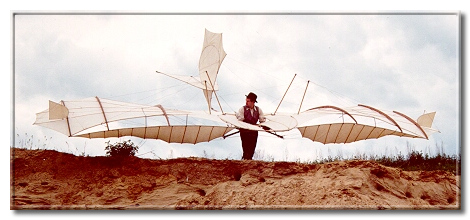
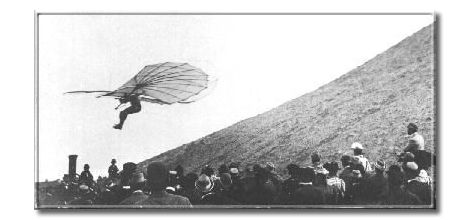
Courtesy archives Otto-Lilienthal-Museum
Carl Paul Goerz
A German entrepreneur who started the Goerz company, which employed at its largest size in 1917 more than 10.000 employees. Goerz produced all sorts of optical instruments from telescopes, lenses and cameras to military binoculars and periscopes. The company had production lines and distribution offices in London, New York, Chicago and Paris.
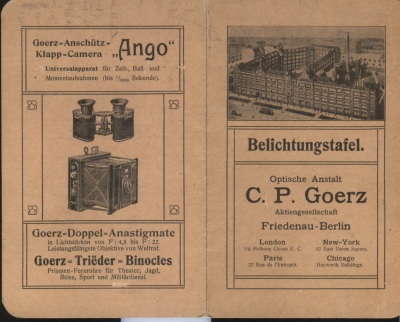
The Goerz Anschuetz strut folding camera, introduced in 1896 was equipped with a “Ottomar Anschuetz Patented” focal plane shutter. It was a shutter with two roller blinds separated by a slit. Different exposures times can be obtained by altering the width of the slit and setting the speed with the lower knob on the right side of the camera. The width of the slit can be changed by setting the position of the end of the string. The original upper roller blind showed 5 figures printed in red: 0,1,2,3,4 and the description “Ottomar Anschuetz Lissa Preussen. Ottomar Ansch"ts signature was printed on the upper blind in red paint. The figures show the adjustable width of the slit to obtain the different exposure times.
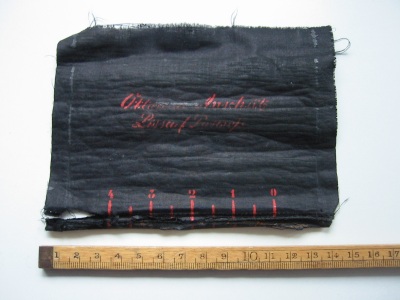
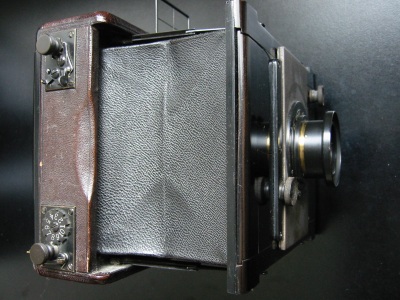
The blinds are made from cloth with a rubber coating to make it light proof. I suppose that the camera was not used for a period of decades or longer, as the blinds could not be rolled off. I removed the mechanism and peeled the blinds off the shaft. I made the new blinds of shutter curtain material. It is not a hell of a job. On the other hand, the camera is not quite original anymore, but it works...and it’s nice to take pictures with it.
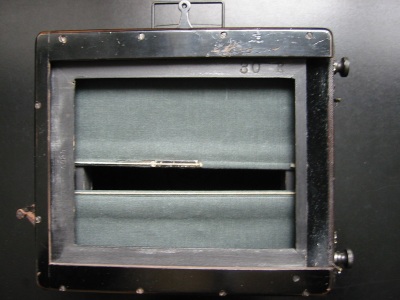
This particular camera is equipped with a Doppel Anastigmat 4,6/120 mm. The lens-board can be moved up and down and shifted to the left and the right. The upper knob is to cock the shutter. Turn it clockwise until it stops.
Before winding the shutter, the spring tension should be set with the lower knob turning it anti-clockwise in 10 steps. The shutter-speed depends on the speed of the shutter-curtain and the width of the slit between the two roller-blinds.
Turn the winding knob until the slit is visible and set the slider. To test the shutter, you may use the Electronic Shutter
Testing Program
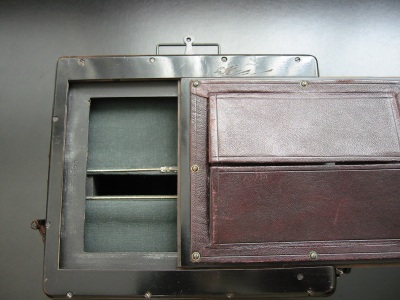
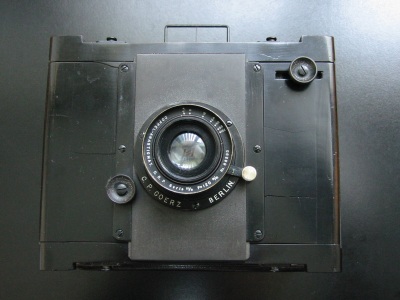
The finder exist out of a hinged frame and a peep hole on the top of the back of the camera. Later models came with a eye-piece with lens and a Newton finder. To be sure, you better focus on the ground-glass. Therefore you have to turn the upper knob until it stops. Then push the little knob on the left side of the camera while turning the right knob further. When it stops, the back of the camera is open and you can put in the ground-glass and focus. After focusing release the shutter. The roller-blind comes down completely in one time, so you have to cock the shutter again. Slide the plate holder loaded with film in the back of the camera. Convince yourself that the focal plane shutter has been set before winding the shutter with open film holder. Later produced ANGO cameras were equiped with the self capping focal plane shutter which makes it easier to wind the shutter without having to take care about the risk of fogging the film. The new Ango camera came with a focal plane shutter controlled by a disk on the outside to set the slit and another control to set the speed of the spring loaded roller.
The
successor, also called GOERZ ANGO was introduced in 1906 was equiped with a self
capping shutter and a Newton finder. This new design was produced for the next
30 years and was based on the same body as its predecessor.
The winding key and exposure slit setting were placed on the right side of the
camera together with the release knob and air-ball remote shutter connector for
Ball exposures from 1/2 up to 5 seconds. Further more the Instant, Time and Ball
selector and last but not least the spring tension winding knob to increase or
lower the spring tension of both blind rollers positioned on the bottom of the
camera. There were several lenses available such as the Dagor, Celor or Syntor.
Sliding lens board for horizontal and vertical shift effects. In 1917 the company was at its largest size with more
than 10.000 employees, and it even survived both the German revolution of 1918
and the depression of the early 1920th. According to the catalogue the 9x12 3/14
x 4 1/4 camera cost 130 Mark and equiped with a Dragor lens and 3 double plate
holders 274 Mark. I'm sure if you do have a working camera, you might love
to take some shots with the oldy. If you’re lucky and you would have the original plate-holders
I'd say let's go and cut
your 4x5 inch sheet film down to the size 90x122 mm*.
Back to European cameras American Press Cameras
*)
To use such a
classic camera with modern and still available sheet-film, you need an underlay of glass or plastic
to fit into the glass holder but not thicker than 2 mm.
If necessary cut the film to the appropriate size and place the sheet film on
top of the underlay. Make
sure the sheet-film lays plain.